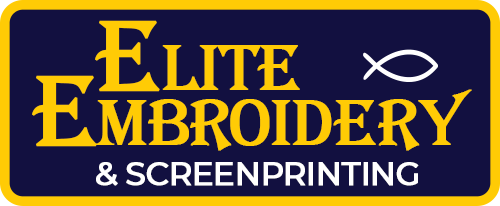Embroidery is an ancient craft that has been used for centuries to decorate clothing, household items, and religious artifacts. The art of embroidery has evolved over time, with different techniques and styles emerging in different parts of the world. Today, embroidery is still a popular craft, enjoyed by both hobbyists and professional embroiderers alike.
In this article, we’ll take you through the step-by-step process of professional embroidery, from the initial design to the final product. We’ll cover everything from the different types of embroidery stitches and the materials and tools needed, to the techniques used to create stunning and intricate designs.
The History of Embroidery
Embroidery has a rich and varied history, with evidence of embroidery dating back to ancient Egypt and China. Embroidery was used to decorate clothing, household items, and religious artifacts. In medieval Europe, embroidery was a highly prized skill, with royal households and wealthy merchants commissioning elaborate embroidered garments and tapestries.
Embroidery techniques and styles have evolved over time, with different regions developing their own unique styles. For example, Japanese embroidery is known for its intricate silk threads and delicate designs, while Mexican embroidery is characterized by its colorful, bold designs.
Today, embroidery is still a popular craft, enjoyed by people all over the world. While many people enjoy embroidery as a hobby, there are also professional embroiderers who create stunning and intricate designs for a living.
Types of Embroidery Techniques
There are many different types of embroidery techniques, each with its own unique style and characteristics. Some of the most popular embroidery techniques include:
- Cross-stitch: A simple, but versatile embroidery technique that involves making X-shaped stitches on a grid.
- Satin stitch: A smooth, flat embroidery stitch that is used to fill in larger areas of a design.
- Chain stitch: A looped stitch that can be used to create a variety of textures and designs.
- French knot stitch: A small, decorative knot that can be used to add detail and texture to a design.
- Crewel embroidery: A type of embroidery that uses wool thread to create a textured, dimensional design.
Each embroidery technique has its own unique challenges and benefits, and the choice of technique will depend on the desired look and feel of the final design.
Choosing the Right Fabric and Thread
Choosing the right fabric and thread is essential for creating a high-quality embroidery design. The fabric should be sturdy enough to support the weight of the embroidery thread, but not too thick or heavy that it becomes difficult to embroider. Some of the most popular fabrics for embroidery include cotton, linen, and silk.
The choice of embroidery thread will also depend on the desired look and feel of the final design. Embroidery thread comes in a variety of colors and weights, with some threads designed for specific embroidery techniques. For example, silk thread is often used for delicate, intricate designs, while wool thread is better suited for textured designs.
Designing Your Embroidery Pattern
Before you can begin embroidering your design, you’ll need to create a pattern or template to follow. There are many different ways to create an embroidery pattern, from hand-drawing the design onto paper, to using specialized embroidery software to create a digital design.
Once you have your design, you’ll need to transfer it onto your fabric. This can be done using a variety of methods, including tracing the design onto the fabric using a lightbox, or using an iron-on transfer.
Preparing Your Fabric for Embroidery
Before you begin embroidering your design, you’ll need to prepare your fabric. This may involve washing and ironing the fabric to remove any wrinkles or creases. You may also need to stretch the fabric onto an embroidery hoop or frame to keep it taut while you embroider.
Setting Up Your Embroidery Machine
If you’re using an embroidery machine, you’ll need to set it up before you can begin embroidering your design. This may involve selecting the appropriate embroidery design and thread colors, as well as adjusting the tension and stitch length settings on your machine.
Embroidering Your Design
Once your fabric and machine are set up, you can begin embroidering your design. This may involve using a combination of different embroidery techniques and stitches to create the desired effect. It’s important to take your time and work carefully, ensuring that each stitch is placed correctly and that the design is coming together as planned.
Finishing Touches and Quality Control
Once you’ve finished embroidering your design, you’ll need to add any finishing touches or details. This may involve adding additional thread colors or embellishments, or ironing the finished design to remove any wrinkles or creases.
Before you consider your design complete, it’s important to perform quality control checks to ensure that the embroidery is of a high quality. This may involve checking for loose threads, uneven stitching, or other defects.
Embroidery Industry Trends
The embroidery industry is constantly evolving, with new techniques and styles emerging all the time. Some of the latest trends in embroidery include:
- Digital embroidery: Using specialized software and embroidery machines to create complex, intricate designs
- Eco-friendly embroidery: Using sustainable and ethically-sourced materials in embroidery designs.
- 3D embroidery: Creating textured, three-dimensional designs using a variety of embroidery techniques.
Conclusion
Embroidery is a beautiful and intricate art form that has been enjoyed for centuries. Whether you’re a beginner or an experienced embroiderer, the step-by-step process of professional embroidery is a fascinating journey that requires skill, patience, and attention to detail. By following the tips and techniques outlined in this article, you can create stunning and intricate embroidery designs that will be treasured for years to come.


